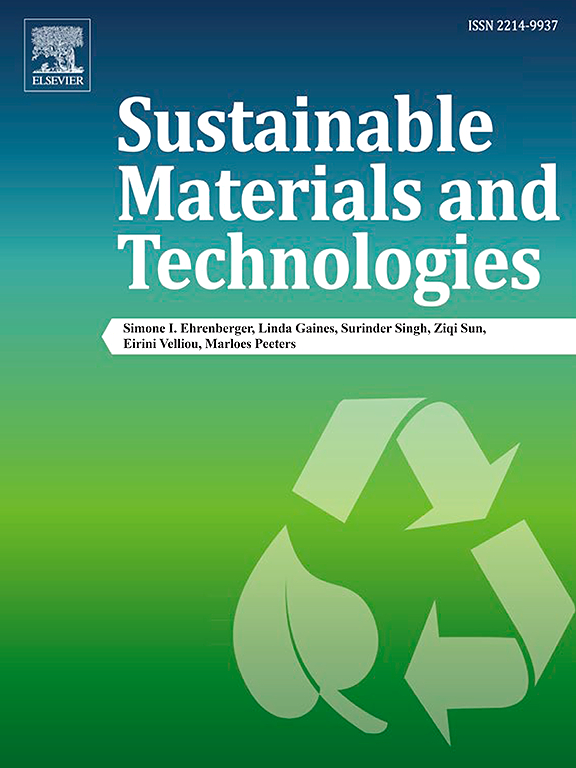Azobisisobutyronitrile-induced biocarbon with high edge-nitrogen density: A metal-free redox-catalyst for electrochemical detection and reduction of 4-nitrophenol
IF 8.6
2区 工程技术
Q1 ENERGY & FUELS
引用次数: 0
Abstract
Enhancing the specific nitrogen dopant concentration within the sp2-C domain of carbon materials is a promising approach to developing metal-free redox catalysts for electrochemical detection and remediation, thereby eliminating the need for toxic chemicals and complex procedures. However, achieving precise control over the type and concentration of nitrogen within the sp2-C domain during pyrolysis remains challenging. In this study, we synthesized unique nitrogen-doped biocarbons (AIBNXOC) by pyrolyzing orange peel waste with azobisisobutyronitrile (AIBN) under nitrogen atmosphere, introducing AIBN as a novel nitrogen dopant. These material were tested for electrochemical detection and reduction of 4-nitrophenol (4-NP). By varying the concentrations of AIBN (X), a nitrogen-rich carbon framework with distinctive functionalities, such as pyridinic-N, graphitic-N, and carbonyl (C=O) groups was achieved. These functionalities successfully enhanced electrochemical performance by facilitating accelerated electron transfer and increasing 4-NP adsorption. The optimized AIBN1OC-modified glassy carbon electrode (AIBN1OC/GCE) exhibited excellent sensing capabilities, with a low detection limit of 0.4 nM and strong selectivity against potential interferences. Additionally, AIBNXOC were applied for the catalytic reduction of 4-NP to 4-aminophenol in the presence of NaBH4, leveraging the synergistic effects of pyridinic-N and C![]() O sites for efficient hydride (Hδ+/Hδ-) formation. Practical applicability was demonstrated by detecting 4-NP in river water samples, showcasing the material's potential for real-world environmental monitoring.
O sites for efficient hydride (Hδ+/Hδ-) formation. Practical applicability was demonstrated by detecting 4-NP in river water samples, showcasing the material's potential for real-world environmental monitoring.

求助全文
约1分钟内获得全文
求助全文
来源期刊

Sustainable Materials and Technologies
Energy-Renewable Energy, Sustainability and the Environment
CiteScore
13.40
自引率
4.20%
发文量
158
审稿时长
45 days
期刊介绍:
Sustainable Materials and Technologies (SM&T), an international, cross-disciplinary, fully open access journal published by Elsevier, focuses on original full-length research articles and reviews. It covers applied or fundamental science of nano-, micro-, meso-, and macro-scale aspects of materials and technologies for sustainable development. SM&T gives special attention to contributions that bridge the knowledge gap between materials and system designs.
 求助内容:
求助内容: 应助结果提醒方式:
应助结果提醒方式:


